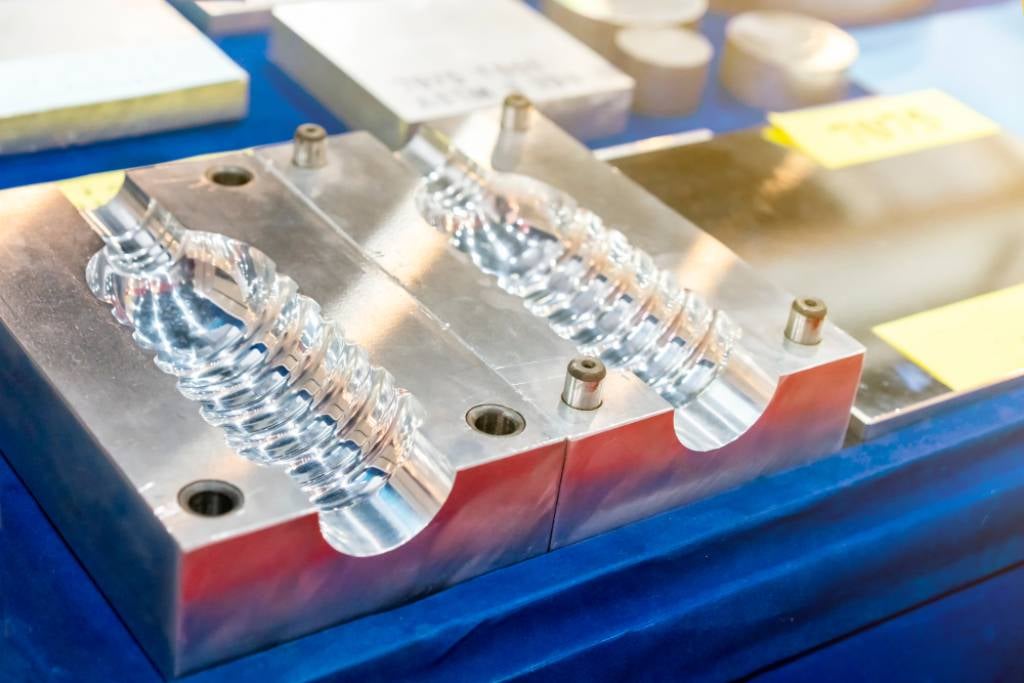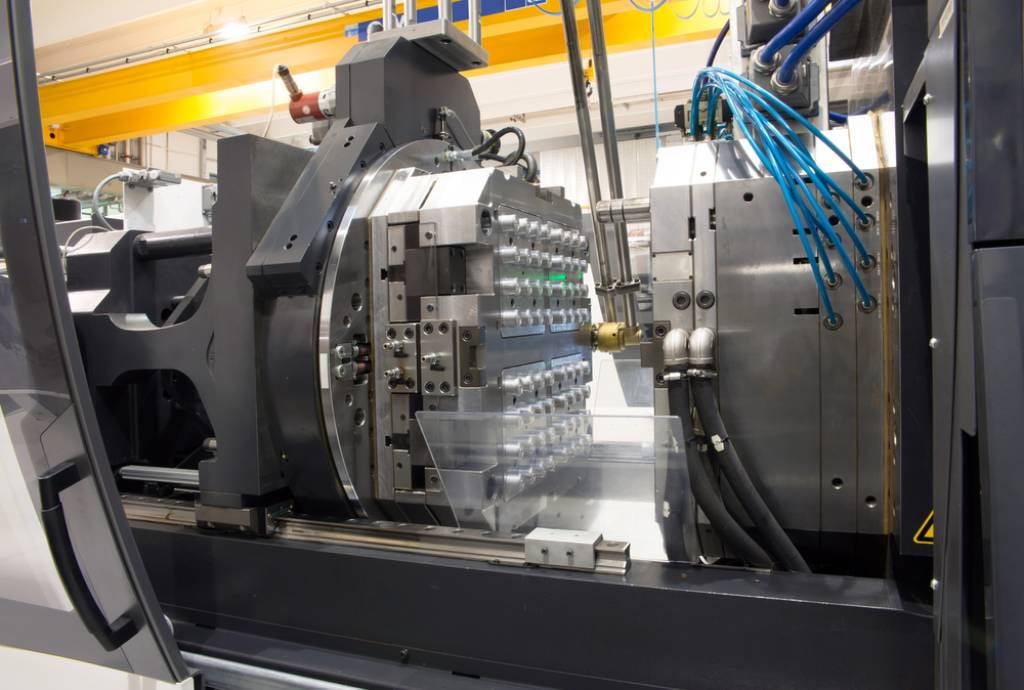
In the world of molded plastic manufacturing, two standout methods dominate the industry: blow molding and injection molding. Both processes serve the primary purpose of forming plastic parts, essential for a myriad of applications, from everyday household items to specialized industrial components.
At a glance, they might seem similar, as both are pivotal for mass production. Yet, their functionalities and outcomes differ remarkably.
This blog dives into the intricacies of blow molding vs injection molding, unraveling their similarities, distinguishing characteristics, and cost implications. By understanding these processes, we can better appreciate the myriad plastic items that permeate our daily lives.
Similarities between Blow Molding and Injection Molding
Both blow molding and injection molding are cornerstone techniques in the realm of molded plastic production. Here are their shared attributes:
- Material Transformation: At their core, both methods involve transforming plastic from a raw form into a final, shaped product.
- Molding Process: Each technique employs molds—carefully crafted cavities—into which plastic is introduced and then takes shape as it cools and solidifies.
- Mass Production: Suited for high-volume manufacturing, both processes facilitate the efficient creation of thousands to millions of identical plastic parts.
- Machinery: Both utilize advanced injection molding machines or blow molding machines, often operated by a reciprocating screw mechanism that feeds plastic into the mold.
- Industry Application: Whether in the automotive, packaging, consumer goods, or medical sectors, both molding methods are extensively used across industries, underscoring their universal appeal and versatility in creating diverse plastic parts.
Understanding these shared characteristics offers a foundation to explore their unique features and applications further.
Differences between Blow Molding and Injection Molding
While blow molding and injection molding share common ground in plastic production, they diverge significantly in their processes, applications, and outcomes. Delving into their distinctions helps in making an informed choice when selecting a molding process.
Nature of the Final Product:
- Injection Molding: Predominantly used to manufacture solid plastic parts. These can range from intricate components like injection molded parts for electronics to larger items like automotive body panels.
- Blow Molding: Specifically tailored to produce hollow parts. Think of everyday items like water bottles or containers, which are created using this method.
Process Mechanism:
- Injection Molding: The process commences with a reciprocating screw feeding the plastic pellets into the mold. The high injection pressure ensures the melted plastic fills every nook and cranny of the mold cavity.
- Blow Molding: Starting similarly with melted plastic, it diverges by using air pressure to inflate the soft plastic, similar to blowing up a balloon, within a mold cavity. This creates hollow structures.
Types and Variations:
- Injection Molding: Generally a straightforward process, though the molded plastic's wall thickness can vary based on mold design and injection pressure.
- Blow Molding: Offers different techniques like extrusion blow molding and injection blow molding. Each has its unique applications and advantages. Additionally, there’s the more advanced injection stretch blow molding, ideal for products demanding uniform wall thickness.
Application Complexity:
- Injection Molding: Offers a broader range of applications due to its ability to produce parts with intricate details and tight tolerances, thanks to the high pressure employed during the process.
- Blow Molding: Best suited for simpler, hollow designs.
Understanding these differences not only aids in selecting the appropriate process for a project but also illuminates the technical expertise and considerations behind each molded plastic piece we encounter.

Blow Molding vs Injection Molding Cost
Diving into the cost debate of blow molding vs injection molding reveals several factors that influence the final price tag. Mold design intricacy, material choice, and cycle times all play pivotal roles. Generally, blow molding might be seen as more cost-effective for producing large quantities of hollow parts, thanks to its faster cycle times for specific products.
However, when complexity rises or when a solid, detailed part is required, injection molding costs might increase due to the high-pressure mechanisms and detailed molds. But it's essential to break down blow vs injection molding costs comprehensively, considering operational, material, and machine expenses to make an informed financial decision.
Which is Better: Injection Molding or Blow Molding?
Deciding between injection molding and blow molding is not a matter of superiority but rather appropriateness for the task at hand. Here’s a guide to their best-fit scenarios:
Product Requirements:
- Injection Molding: Ideal for detailed, solid parts that require precise features and tight tolerances. The high-pressure technique ensures that even intricate designs are replicated accurately in each injection molded part.
- Blow Molding: Perfect for products needing a hollow design, like bottles or containers. The air pressure used inflates the plastic, creating hollow structures seamlessly.
Volume & Precision:
- Injection Molding: Given its precision, it's suitable for both high-volume mass production and products demanding meticulous detailing.
- Blow Molding: Especially apt for high-volume production of simpler hollow parts.
Cost Implications:
While the blow molding vs injection molding cost debate has been explored, the choice should factor in both immediate expenses and long-term operational costs.
Material and Design:
- Injection Molding: Can handle a broader range of materials and offers more flexibility in wall thickness based on the mold design and injection pressure utilized.
- Blow Molding: While it offers design flexibility, especially in wall thickness, it's tailored mainly for specific plastics suitable for creating hollow structures.
Machine and Process Type:
- Injection Molding: Uses specialized injection molding machines, often with a more complex setup due to the high pressure and precision required.
- Blow Molding: Comes with varieties like extrusion blow molding and injection stretch blow molding, each having unique machine setups and benefits.
The “better” choice depends on the specific needs of a project—its design, volume, budget, and material requirements. Making an informed decision ensures the optimal balance between quality, cost, and production efficiency.
Conclusion
Navigating the intricate world of molding, particularly when weighing extrusion blow molding vs injection blow molding, underscores the vast spectrum of possibilities in plastic production. Each method, from the various types of blow molding to the precision of injection molding, has been fine-tuned to meet specific industry needs.
However, it's also pivotal to recognize the rising prominence of alternatives like 3D printing, which offers unparalleled customization and rapid prototyping capabilities. In the end, the choice between these methods isn't a one-size-fits-all solution. It's about harnessing the right technique for the task at hand, ensuring that innovation continues to mold the future of production.

Comments